What Is Alkyd Paint? – Guide to Oil-Modified Polyester Coatings
This post may contain affiliate links. We may earn a small commission from purchases made through them, at no additional cost to you.
With a variety of paint types available on the market, it can be daunting when it comes down to choosing the right product for the job. If you are asking yourself, “what is alkyd paint?” or you come across a product called “enamel paint”, then you are in luck, as we will be taking an in-depth look at this type of paint and its properties to help you to make an informed decision. Keep reading to find out more, from different types of alkyd paint to all of its characteristics!
Table of Contents
What Is Alkyd Paint?
All paint is composed of a binder as well as a pigment. The pigment provides color to the paint, whereas the binder keeps it in place after it is dry. Since pigments in paints are largely the same, paints are historically classifies in accordance with the binder used in their production. Oil paints’ contemporary descendent is alkyd paint, or enamel paint, as it is commonly known in some part of the world. As opposed to the pigment being embedded in oil, alkyd paints are normally created by dissolving an alkyd resin in a paint thinner.
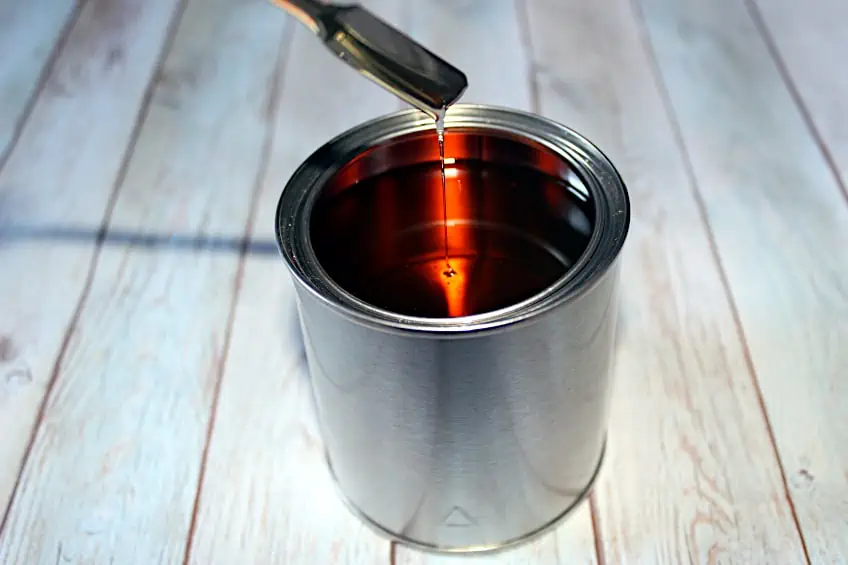
The pigment in most commonly available “oil-based paints” has been suspended in a mixture of an alkyd resin as well as an oil-based solvent such as naphtha. Cured alkyd paint has a tough jewel-like finish comparable to the look achieved by melting colored glass that is known as enameling, hence the name enamel that is often applied to this paint.
Standard alkyd paints dry through solvent loss and hardens by oxidation in about five days to a firm, glossy surface that latex paints just cannot match. As a result, alkyds are ideal for interior cabinets, doors, trim, and other high-use areas requiring seamless durability. Brushing alkyd paint over a railing or kitchen cabinet may make it appear sprayed.
The History of Alkyd Paint
J. Smith synthesized alkyds for the first time in 1901, and General Electric patented them in 1914. Glyptal, created by GE in 1926, was the first commercially available alkyd paint. Alkyds are widely used with oils such as linseed, soybean, and safflower, to create paints that are robust, resistant, and non-yellowing.
The Importance of Alkyd Paint in the Painting Industry
Alkyd paint has its place in the industry, and one of the main reasons for this paint being so important is due to its use for coating surfaces that need to withstand significant use and impact. Alkyd paints as well as coatings are a form of oil-based paint that is widely used in the maritime environment for painting marine machinery in order to protect it from the effects of weather and water. They are suitable for use as a primer, undercoat, and topcoat.
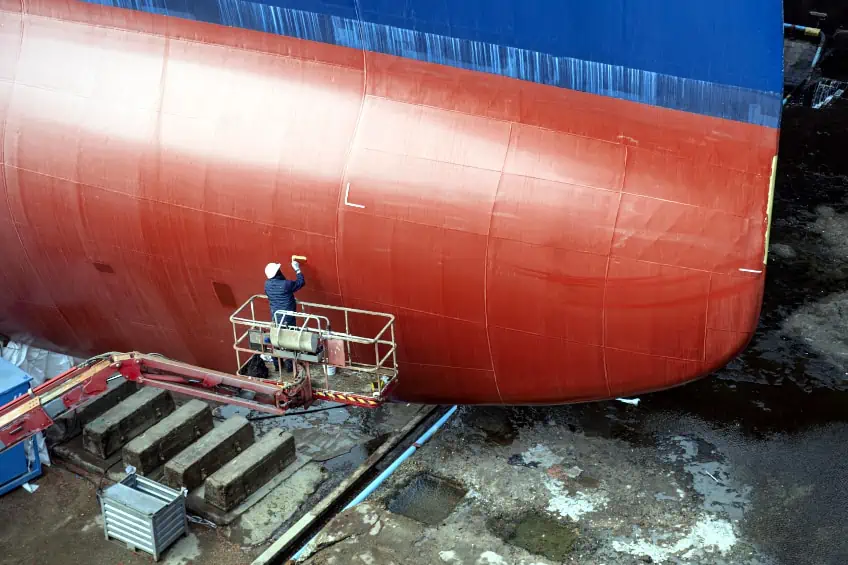
Essentially, if you are wondering what is alkyd paint used for, think of it as an extremely durable coating that can withstand most environments. Because of this, it has become a mainstay in the industry and while it can be difficult to use for DIY projects, it is a vital component for industrial paint jobs.
Types of Alkyd Paint
Before we can answer the question of “what is alkyd paint”, we will need to understand that there are different types of this paint. Below, we have provided all of the information that you would need when it comes to the different types of alkyd paints that are available on the market.
Oil-Based Alkyd Paint
Alkyd paint is sometimes known as oil-based paint since it contains chemical thinners and binders. They are not, however, the same as acrylics. Thinners for alkyd paints are commonly prepared using mineral spirits or alcohol. The thinner changes the consistency of the paint to control much it will run and how fast it will dry.
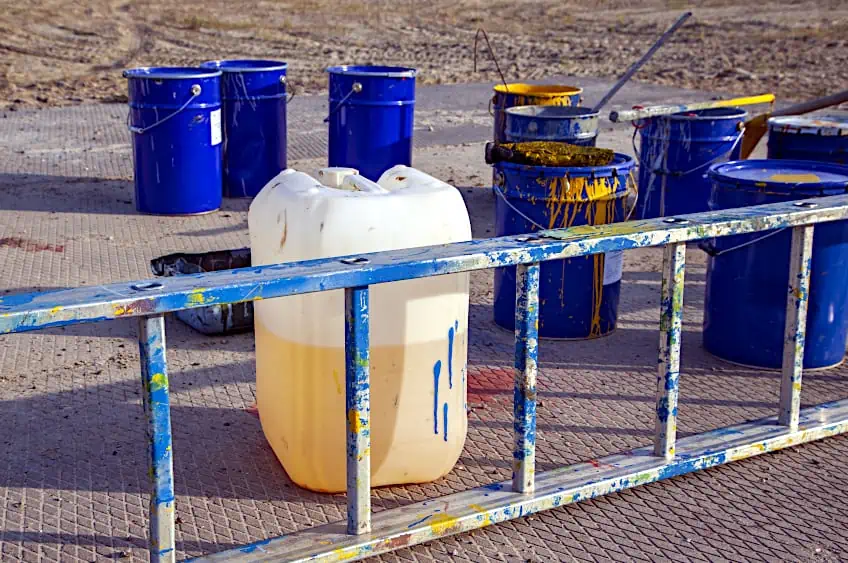
The binder aids in sticking the paint to the area that is being painted. The binder found in alkyd paint is often an artificial resin.
Water-Based Alkyd Paint
Advance is essentially an interior alkyd paint made using a 100% water-soluble alkyd composition. This paint contains unique Benjamin Moore resins intended to keep volatile organic compounds (VOCs) to a minimum once the paint has been colored. This paint mix combines the advantages of an oil-based paint with the attributes of modern water-based paint. This product is one of the only water-based alkyd paints available today.
Solvent-Based Alkyd Paint
Organic chemicals are more abundant in solvent-based coatings than in water-based coatings. These solvents or chemicals aid in the application, drying, and production of a long-lasting, regular paint coating.
On the downside, as these chemicals evaporate, they emit VOCs into the atmosphere, causing a strong smell and a hazardous effect on the ecosystem. Stricter environmental restrictions have compelled paint producers to significantly lower VOC levels in their products.

A Comparison of the Different Types of Alkyd Paint
Due to the advancements in technology, the need for alkyd paint that has harmful chemicals has decreased over time. When asking the question, “what is alkyd paint?”, it is very important to have a clear understanding of the chemical composition of the paint itself and what this means for the environment. Below, you will find a table that will make it easier for you to compare the different types of alkyd paint.
| Characteristics | Oil-Based Alkyd Paint | Water-Based Alkyd Paint | Solvent-Based Alkyd Paint |
| Application | Metal and wood surfaces (often used on marine equipment) | Interior use, specifically for metal and wood | Metal and wood surfaces |
| Durability | High | Very high | High |
| Drying Time | 24 hours | 30 minutes | 16 hours |
| VOCs | High | Low | High |
Characteristics of Alkyd Paint
Now that you understand what is the difference between alkyd and latex paint, including the different types of alkyd paints, we will dive into alkyd paint in its entirety. Below, you will find more information related to the different characteristics of alkyd paint.
Drying Time
After drying, which takes up to 16 hours, alkyd paints will continue to cure. It normally takes three to four weeks for an alkyd paint to reach its highest level of hardness and resistance to abrasion. However, some variations, such as acrylic alkyd paint, will only need up to four days to fully cure.
Durability and Resistance
Alkyd paint is particularly resistant to harm since the binder is a strong resin. As a result, many individuals paint items in high-traffic areas of their houses, such as corridors, with this type of paint. The resin binder is also moisture resistant, making it an excellent paint for applications in the bathroom or kitchen.
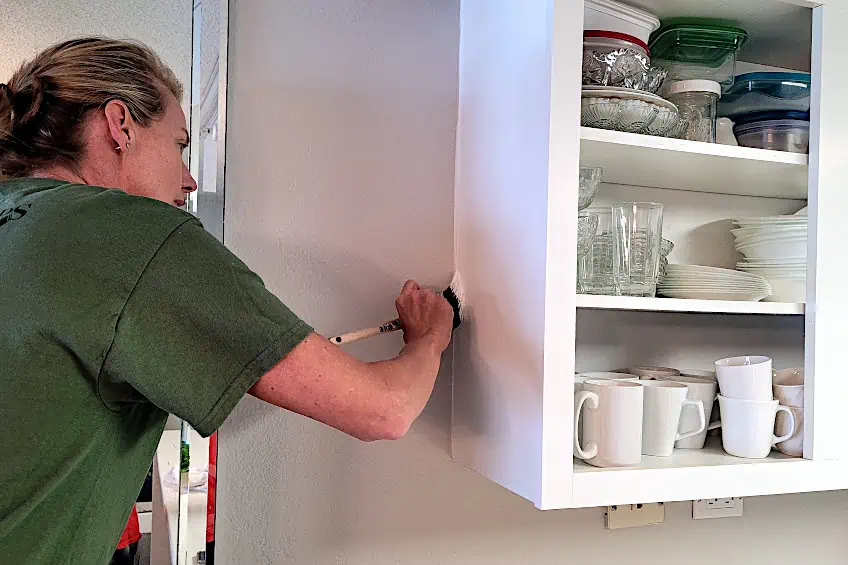
Gloss and Sheen
Alkyd paint has a natural gloss and sheen once it fully cures, which is the result of the oxidation of the paint. However, alkyd paint is also available in a variety of finishes such as matte and semi-matte, which is great if you are looking for a unique finish.
Color Retention
Alkyds have been shown to have outstanding color retention as a result of their higher pigment density, as well as superior durability and quick drying time. If you are an artist, then you may have noticed alkyd oil paints on the shelves of your local art store.
Artist’s alkyd oils can be used alongside conventional oil paint, or alone with a drying-medium such as Liquin.
Application and Coverage
Alkyd paints are frequently used of surfaces that will be subject to harsh climactic and user impact. They are also more likely to be used for objects that cannot be repainted on a regular basis. Furthermore, alkyd paint has a far longer gloss retention time than other forms of paint. Since the excellent adhesion of the polymer binder, alkyd paint may be applied over latex paint. It may also be used on unpainted wood.
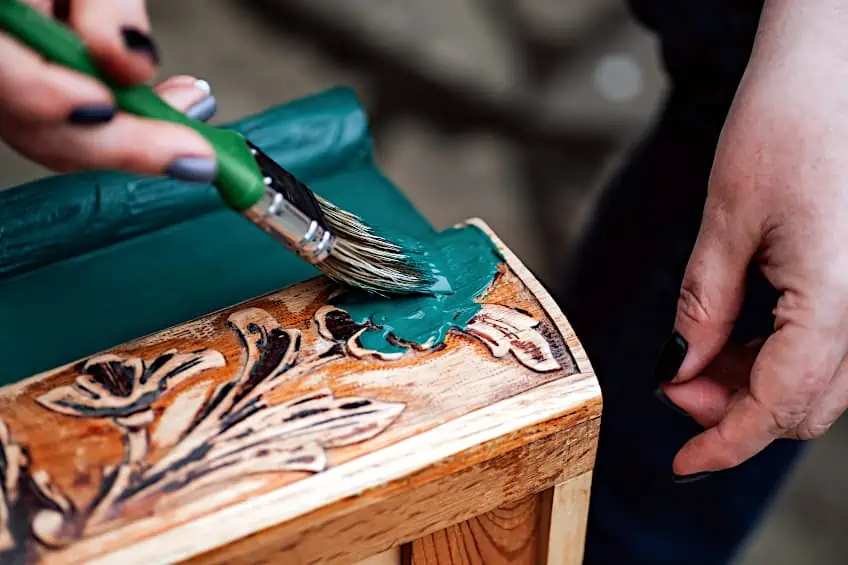
Alkyd paint tends to become thick and sticky after exposure to air, so fluidity and coverage may be affected during large paint jobs if you do not keep your paint covered. In some applications, such as spraying, the addition of paint thinners may be required.
This paint is the most suitable choice if you intend to paint a spot without doing any preparation or removing the existing paint. But keep in mind that it can be difficult to apply to a professional grade finish, and cleanup will require harsh chemicals.
Advantages and Disadvantages of Alkyd Paint
Like any other type of paint, alkyd comes with its pros and cons. Here we will take a closer look at them and this should help you to decide whether you would be using this product. If you are planning to use this paint as a new DIY painter, we implore you to consult a professional before getting started.
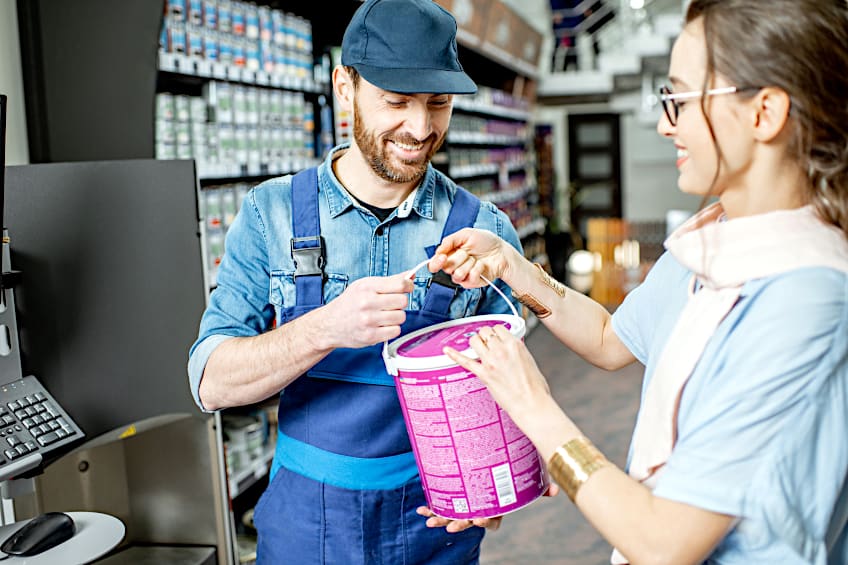
Alkyds dry significantly quicker than oils, but not as quickly as acrylics. The paint will stay usable for several hours, based on how generously it is applied, the ambient temperature of the surroundings, and whether any extra alkyd-based painting solution is added while you work. Alkyds start to dry within an hour in my experience, making them great for outdoor painting. They do take longer than that to cure though, so test if the paint is fully hard before recoating or use.
Water-based oils are not to be confused with alkyds. Alkyds may be combined with conventional oils and thinned using the same solutions.
There are a handful of disadvantages that come with using alkyd paint, which is primarily a result of the chemical composition of the paint itself. Starting with the pigments, these are heavier than the oils and resins that are found in the paint itself. This means that the paint in the can will settle over a long period, making it very difficult to re-activate as the pigments themselves have solidified.
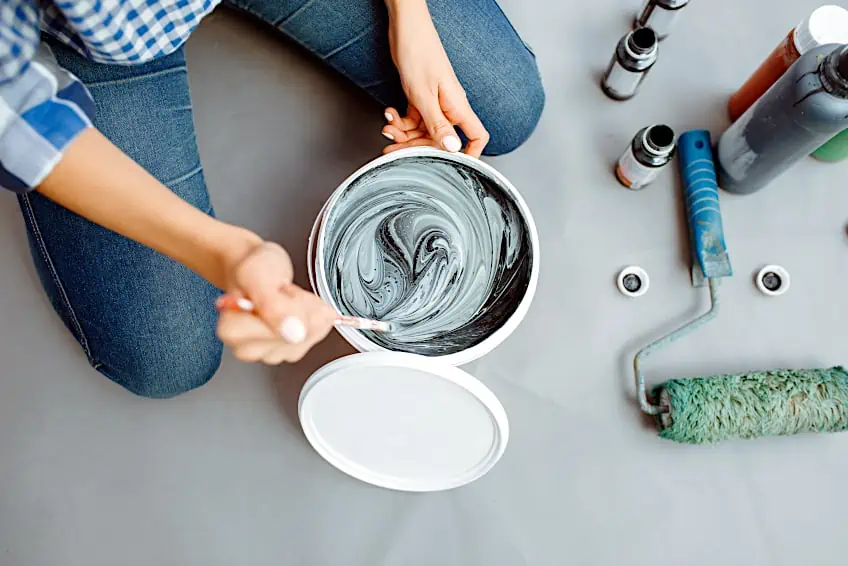
While alkyd paint is known for its gloss, the gloss is not as good as those provided by other paints and this applies to the color retention as well.
Alkyd paints are not suitable for direct application on concrete, cement, or most masonry. Since the alkalis found in the cement destroy the oil element in the paint, it softens and becomes sticky after application. If you have to use an alkyd paint on these surfaces, make sure to first use a very good quality primer.
- Great chemical resistance
- Single coats are very thick
- Smooth application
- Resistant to scruff
- Longer drying period
- Paint thinner is needed for cleanup
- Increased brittleness compared to other paints
Comparison of Alkyd Paint With Other Types of Paint
Despite being more costly than acrylic and latex paints, their superior performance and simplicity to use have enabled them to maintain a large market share. While the initial solvent-borne compositions have faced market challenges due to environmental limitations, modern aqueous alkyd coatings, as well as modified alkyd paints provide the excellent performance of solvent-borne solutions with much decreased solvent content.
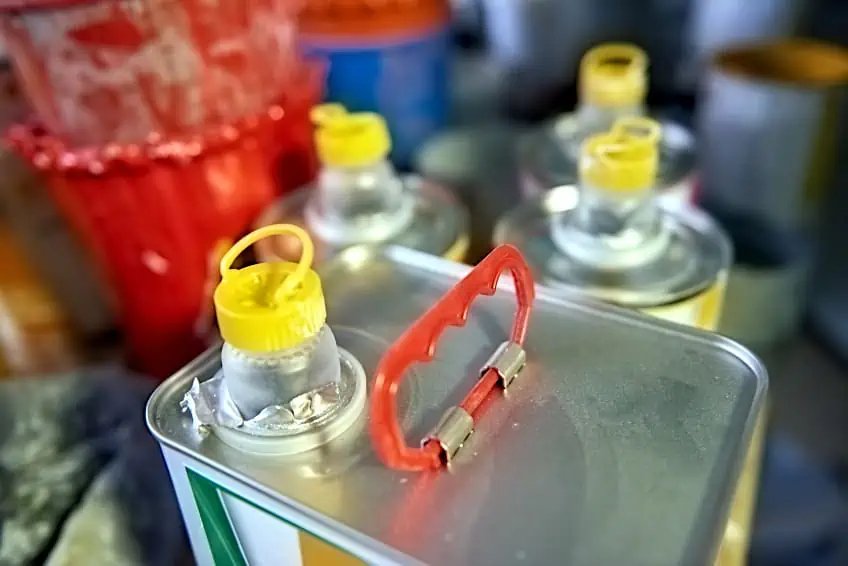
Alkyds have a unique promise as a green product due to the usage of vegetable oils instead of petroleum-based oils. In contrast to other paint variations, alkyd has its uses. However, it is not as versatile as latex and acrylic paint.
How to Use Alkyd Paint
Alkyd paints are quite simple to apply provided you do not over apply it. It is better to paint one or two thin coats, than try to achieve full coverage in one thick coat. If alkyd paint is applied to thickly, the surface will cure before the evaporation is complete, causing the paint to remain soft with distinctive wrinkling on the surface.
If painting a vertical surface, keep in mind that while a thick layer of alkyd paint will not appear to run and drip immediately, it will do so after you have completed your coat, resulting in an unsightly finish that can only be repaired by sanding everything down and repainting. So be patient, and apply thin coats at a time.
Alkyd paints are sold as one-pot preparations that require no additional mixing other than stirring before use to ensure consistent dispersion of the colors and additives. The majority of alkyd paints are applied with a paintbrush or roller. If thinned it can be applied with a compressed-air sprayer and some formulations are available in an aerosol spray can.

Surface Preparation
Cleaning the wall before painting is an important part of the process and this should be done after sanding. Using a pressure washer to get all of the dirt and grime off the wall is a good place to begin; however, you need to ensure that you apply the paint to a completely dry surface.
Application Techniques
Thin coatings should be used in most applications to allow for oxidative curing. Thick coatings can create a skin on the surface, retaining an uncured liquid element underneath the surface. When thicker coatings are needed, numerous thin layers should be applied instead of one thick one.
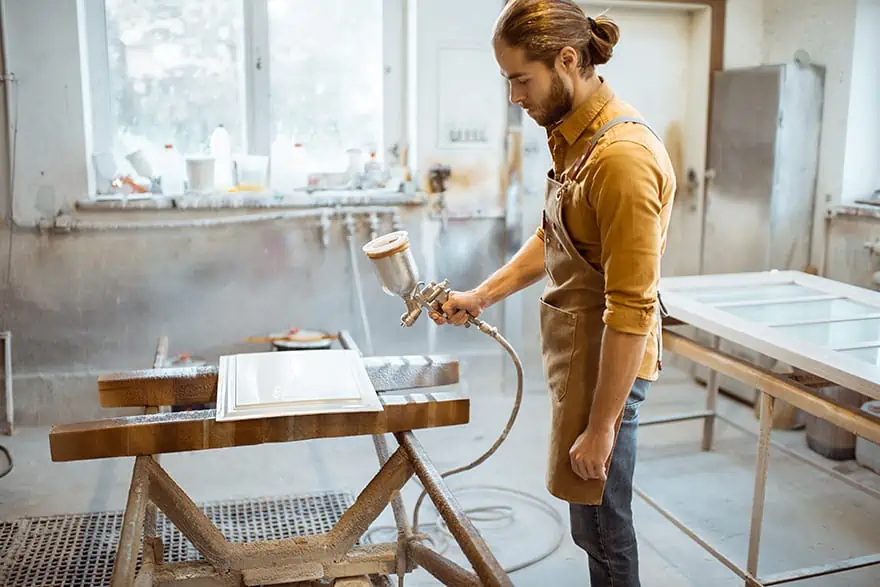
Safety Precautions
To avoid exposure, wear proper worker protection equipment and clothes. Avoid inhaling mists or vapors, as well as making contact with your eyes and skin. Extinguish or eliminate any sources of ignition and, if possible, stop the leak. You need to ensure that you always have enough ventilation, so if you are working indoors, keep a door or window open.
Learning what is alkyd paint is an important part of the painting process, as this will teach you how to use the paint properly. While it can be a potentially difficult and dangerous paint to use, with enough practice and safety measures in place, you could use it all around your home. We wish you the best of luck with your next DIY paint job!
Frequently Asked Questions
When Would Be the Best Time to Use Acrylic Modified Alkyd Paint?
If your main goal is to get a durable finish on a unique surface without suffering through the fumes of normal alkyd paint, then this is the best type of paint to use due to its thickness and strong adhesive properties.
What Is the Difference Between Alkyd and Latex Paint?
Latex paint is water-based, whereas alkyd paint is oil-based. Both of these paint variations have great adhesive properties, but alkyd paint is perfect for chalked surfaces.
What Is Alkyd Paint Used For?
Alkyd paint is not usually used for walls. Instead, this paint is best used to achieve a strong, weatherproof, and durable coating on metal and wood.
Learn more about Rebecca Fleming and about us.









